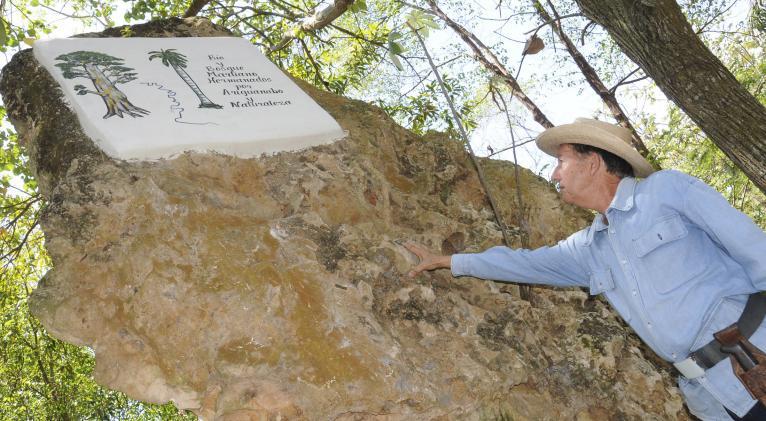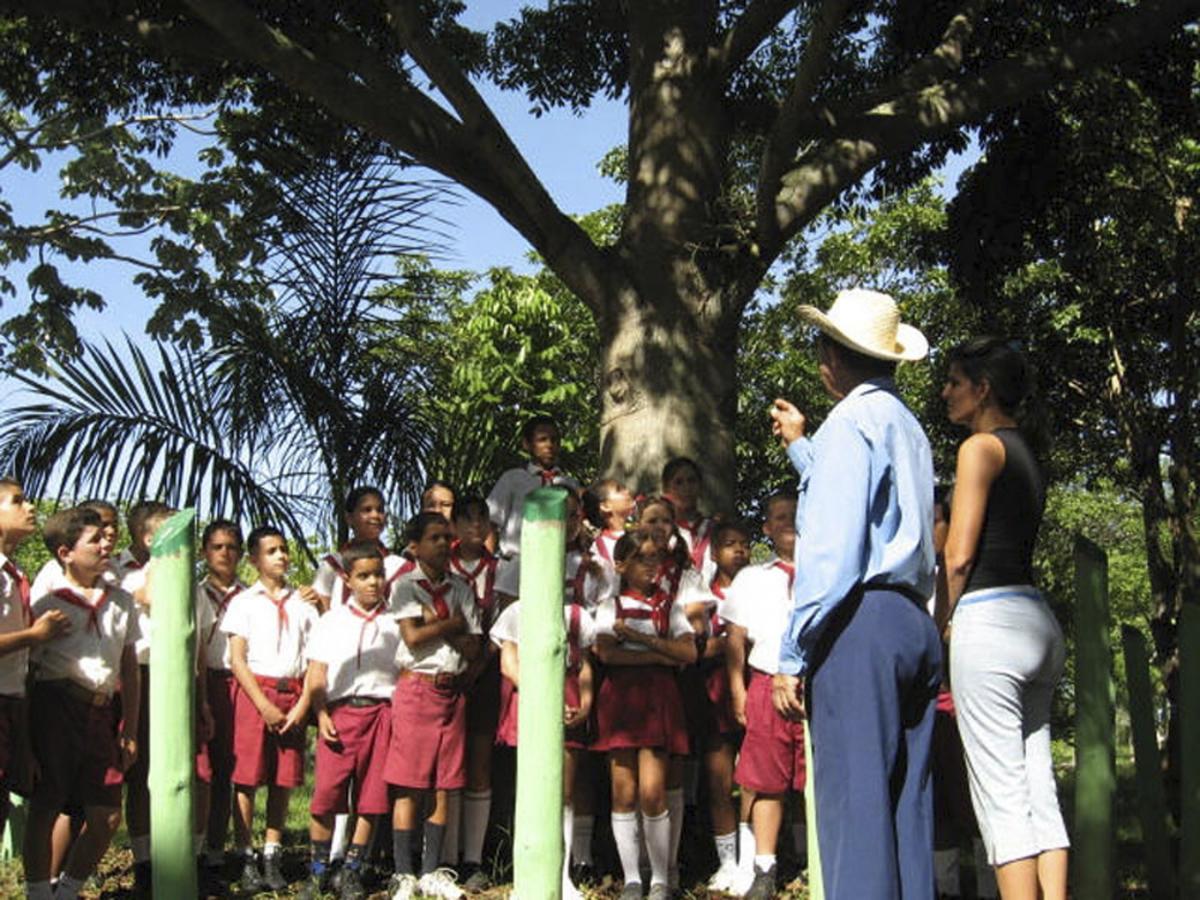Where Trees Speak… of Martí
especiales

Who said trees don't talk? In San Antonio de los Baños, Artemisa province, 18 km from Havana, there is a forest where it happens. Rafael Rodríguez Ortiz planted them to tell stories and evoke exploits about José Martí.
Felo, as everyone knows him, achieved it with determination. Despite the fact that friends tried to talk him out of this, he left his comfortable job in a store, dedicated himself to eliminating a landfill of stones and waste, and held in his hands the book Campaign Diary: from Cap Haitien to Two Rivers, written by our National Hero, to replicate the trees mentioned in the historic publication.
Before long, he built a large school. There, a ceiba tree similar to that of Playitas de Cajobabo (on the southern coast of the eastern province of Guantánamo), tells visitors about the arrival in Cuba of the organizer of the Necessary War and the Generalissimo Máximo Gómez, on April 11, 1895, to resume the struggle.
Very still branches and leaves of dagame and bostete trees share their great sorrow, due to the unfortunate fall in action of the Apostle, between two similar plants, in the place called Dos Rios.
Copeys, clammy cherries, majagua, güiras... they teach their own classes, like episodes, with the passion of remembering a feat or a transcendental event. They say that those were the first species planted.
It’s not true, the first thing was the love for Martí.
In the already sacred site grow a baga, a teak ... Some no longer existed in the Western region, and were practically disappeared in the archipelago. So even from Sierra Maestra he brought them: crabwood, ebony, jigüe, guayacan trumpet tree, blck olive tree, guavaberry, muskwood, bitter... he did not even limit himself to the 40 trees and bushes mentioned in the book.
To reveal Martí's sensitivity, he planted a copperwood, which the author of the Simple Verses described as “silk skin,” in order to refer to its stem covered with a thin, transparent fabric with a coppery sheen.

Another interesting lesson corresponded to the banana plantation. “Gómez, at the foot of the mountain, on the path shaded by banana trees, with the ravine below, tells me, beautiful and moved, that apart from recognizing in me the Delegate, the Liberating Army, for him his Chief, elected in a council of chiefs , appoints me Major General. I hug him. “Everyone hugs me.”
Mangoes also grow, as in Baraguá, the scene of Lieutenant General Antonio Maceo's protest, when they offered him peace without independence.
This man who attracts young and elders from all over Cuba and the world to the Bosque Martiano del Ariguanabo, says that he was very young when he read the book Diario de Campaña. He says it amamzed him: “I didn't leave my house; all I did was study.”
Sprawled with a pile of texts on the floor, he was racking his brain about how to represent the 394 kilometer route (from Playitas to Dos Ríos) in 33.6 meters. “I had the right to feel happy for my small country, through this dream of multiplying love and respect for Martí's work, historical values and nature.”
He read about forestry and pregenerative treatment, to erect a Sabicu tree on those lands, to dress in green his picturesque classroom (or outdoor museum).
Cedar, pine, mahogany, oak, and teak combined woods to build the Granma yacht. These species have a space.
In addition, there are five palms, just like in that historic meeting of Fidel and Raúl; and a replica of the Demajagua bell (donated by Eusebio Leal, Havana City Historian), which they toll every day.
days.
Progressively, 35 mahogany trees and more than a hundred blue mahoes grew, the yellow jocuma expanded... all fertilized with his efforts and that of the directors of the prestigious institution who succeeded him (Alfredo Ruiz Fleitas and Idael Núñez González).

Very soon the Forest will celebrate 30 years since it was inaugurated, on May 19, 1994. But first, this January 28, all of Cuba celebrated the 171 anniversary of the birth of the National Hero. Perhaps for this reason, no action has seemed enough to these Marti followers, and they continue to fill that magical corner with teachings.
Thus, they carried large stones to multiply History: the Monument to America was born, with the map of Martí's journey through the continent and his phrases about the necessary unity.
Núñez González, the current director, created the Callejón del Sembrador, with a floor of leaves, as described in the Diario de Campaña, and large stones on both sides, in which the decima verse predominates between quartets and phrases, because San Antonio de los Baños is a cradle of poets.
““Sigan sembrando semillas/ no interesa de qué modo/ hasta que se pueble todo/ el Caimán de las Antillas./ Que las plantas sean sombrillas/ abiertas para el verano./ Que la Sierra baje al Llano./ Que el Llano a la Sierra suba,/ y que se convierta Cuba/ en un Gran Bosque Martiano./”, reads one of the stones in the verse of José René Fuentes Cintado.
"You have to live by sowing" says Felo—, not only in the fertile land, but also in the conscience of children, young people who organize camping trips and all visitors.”
El Bosque holds several crowns from the Urban Agriculture Movement and numerous awards, such as the Utility of Virtue Distinction, conferred by the José Martí Cultural Society. Its ecological and patriotic message caught on from the beginning, and made more forests emerge throughout Cuba.
Thousands of people visit the one in San Antonio every year. It casts a spell on children who come with their parents and teachers who like to bring their students. Both the huge ceiba tree and guayacanes will continue to tell stories about a man whose height exceeds that of any tree.
Translated by Amilkal Labañino / CubaSí Translation Staff














Add new comment